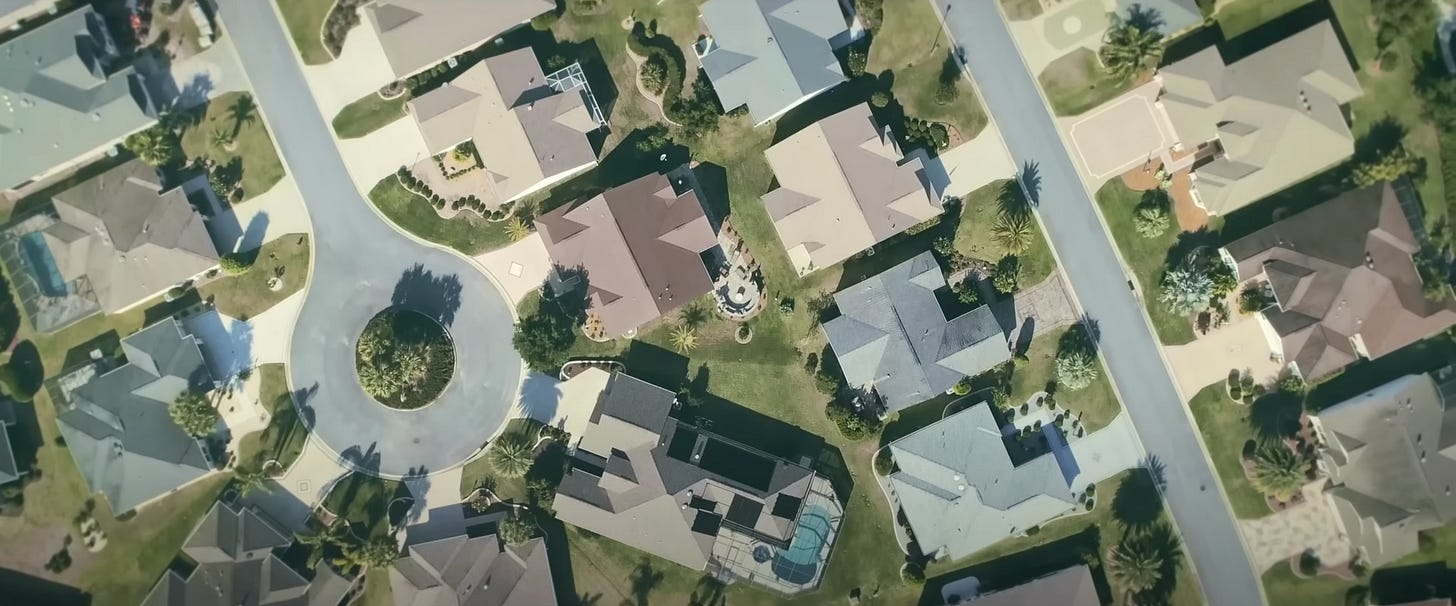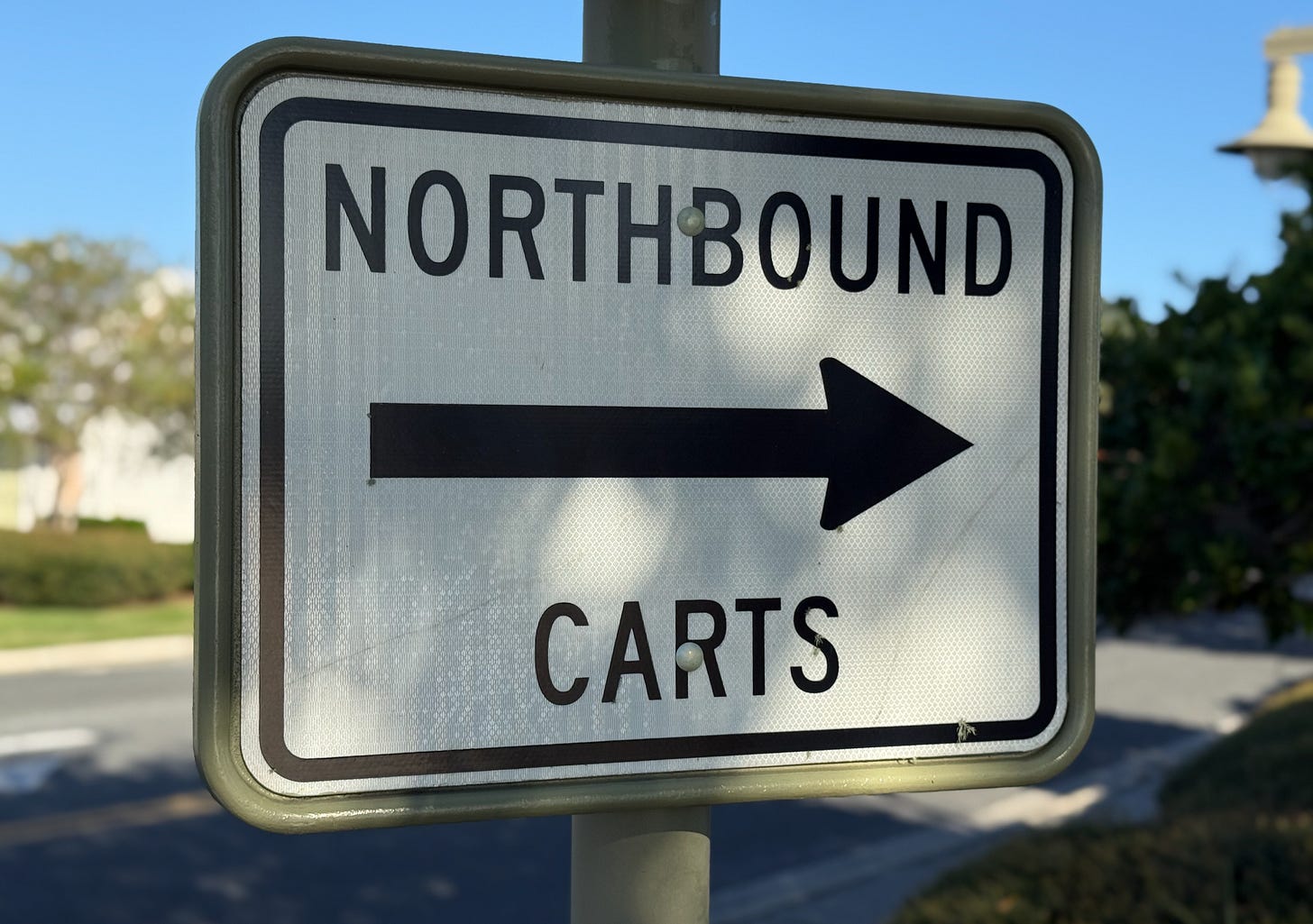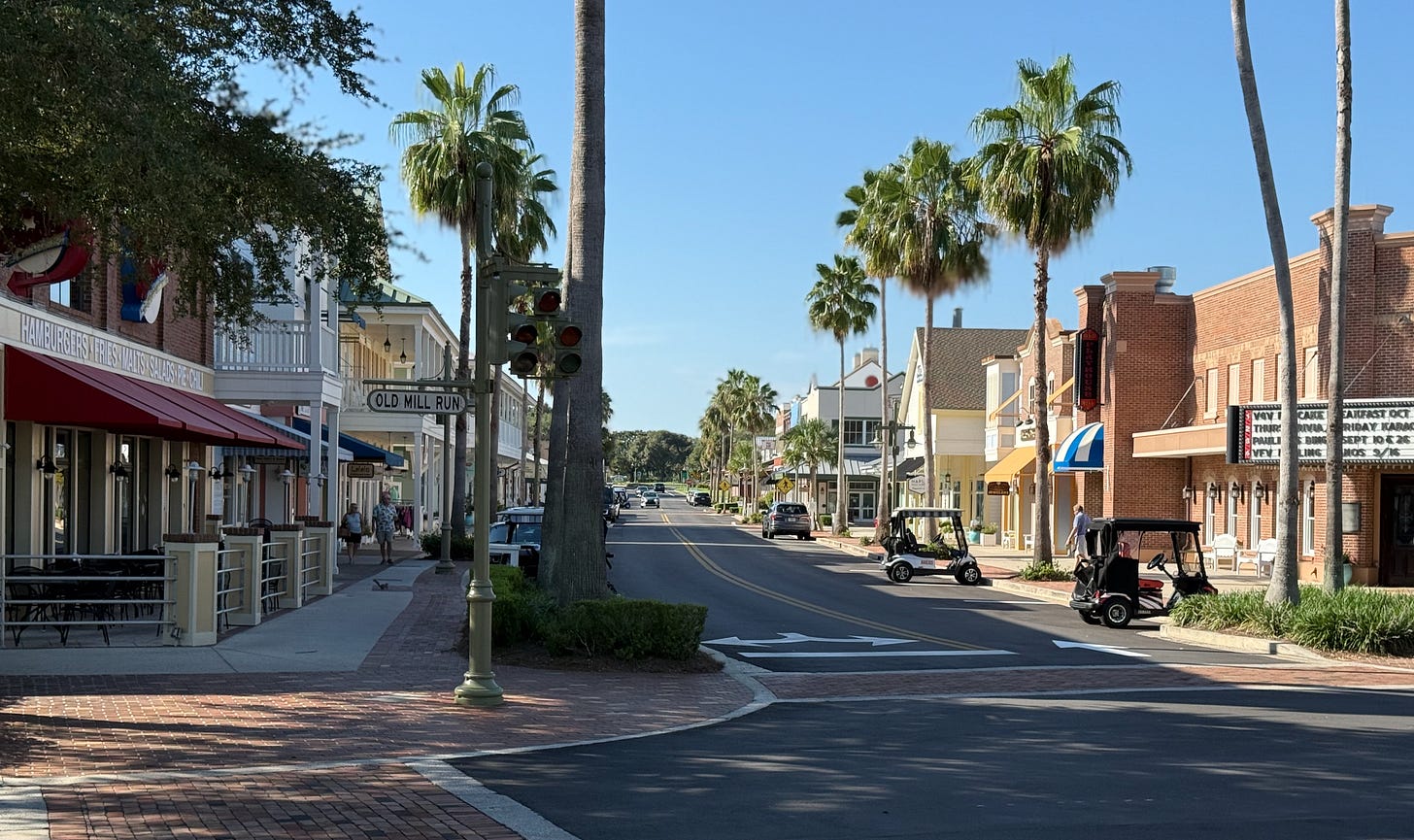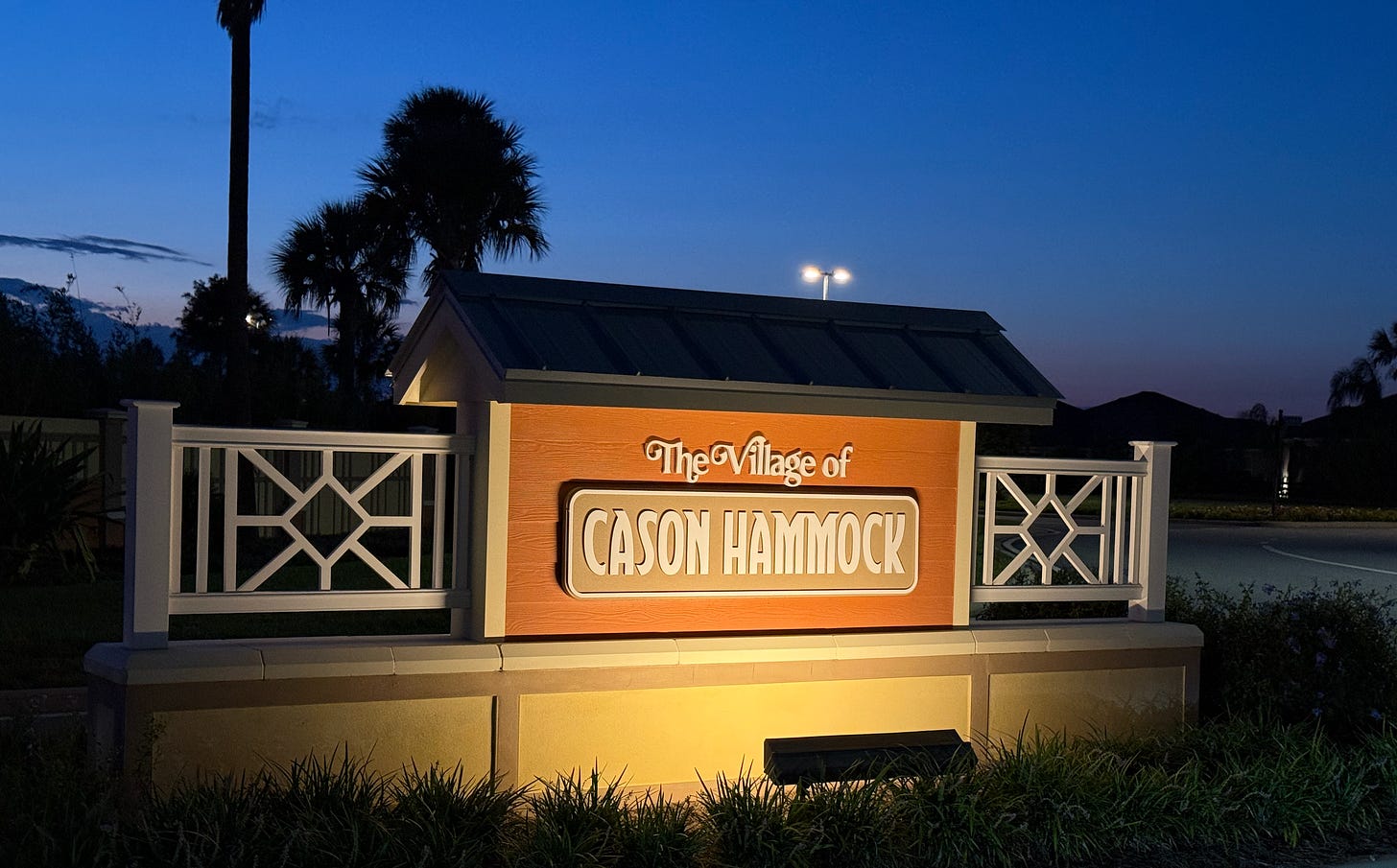Welcome to Leisureville, U.S.A.
Myth vs. Reality in the World’s Largest Retirement Community
As mentioned in Not Retired Yet: My Life in The Villages at 40-something, when I told people I was moving to The Villages, the reactions were visceral.
They pretty much fell into three buckets:
1. Isn’t that the place with all the golf carts and STDs?
2. Florida? Really?
3. But… you’re not retired.
All fair questions.
Because on the surface, this place is a punchline. A parody of aging. A literal 55+ Disney World. MAGA hats, happy hours, and a golf cart in nearly every garage.
Then I moved there.
And just like that, I became part of the most misunderstood community in America. A place that seems singularly focused on the leisure lifestyle and one with a deep mythology surrounding it.
After a couple of years building relationships in the community and having numerous conversations — I’ve found the reality to be more complex and nuanced.
Some of the Myths
Let’s start with what many people think they know…
1. It’s All White Republicans in Red Hats
Yes, The Villages leans conservative. The MAGA flags are real. So are the political tensions.
But there are transplants from California, New York, Chicago, and other large metropolises who don’t fit the mold — and don’t want to.
I’ve met Black residents building community and making an impact through groups like the African American Club of The Villages and Sophisticated Gents of Florida. Here you’ll also find Democratic clubs, LGBTQ+ networks like Rainbow Family & Friends, the Asian American Club, and so many more.
There’s a quiet but growing presence of people with different values, identities, and worldviews. Unfortunately, the monoculture myth flattens this diversity as if it’s non-existent.
2. It’s All Day Drinking and Golf Carts
Sure, there’s plenty of that. But there’s also over 3,000 clubs.
Competitive sports. Daily dance classes. Cycling clubs. Photography groups. Birders. Authors. Masters-level athletes training at elite levels. The list goes on.
The physical energy here is real — and surprisingly intense.
This isn’t about decline. It’s about reinvention.
3. It’s Where People Go to Fade Out
This might be the biggest myth. Many are coming here to start over.
Divorcees rebuilding. Retirees launching second or third-act businesses. Widows finding community. Caregivers finally getting space to breathe.
People are taking up painting, learning languages, and discovering new versions of themselves.
4. It’s Environmentally Reckless

This one’s partly true, but deserves more context.
Yes, The Villages has artificial lakes, golf courses, and heavy irrigation.
What the media doesn’t report is that 76% of irrigation water here comes from reclaimed or alternative sources — including stormwater collection and treated reuse water.
It’s not perfect. But it’s not exactly the reckless stereotype either.
Even this highly curated environment is adapting to climate pressure.
It’s a design tension — not just a flaw.
Living Inside the Paradox
As a 40-something who’s not retired yet, I experience The Villages from a unique vantage point. Some days, it feels like I’ve stepped into an alternate reality. Other days, I forget I’m “not supposed to be here.”
I walk the same paths as my neighbors. Attend the same events. Eat, shop, and socialize with folks decades older than me.
There’s a strange harmony here between freedom and friction. And that’s the paradox. This place is optimized for a life stage most of society doesn’t plan for.
Which makes it feel both futuristic… while also behind the times.
I’m not here to romanticize it.
There are tensions around race, class, and identity that mirror the country itself.
Sometimes there’s a feeling of cultural time-travel. Like the rest of the world is speeding up while this place opts for a looped soundtrack from the ‘60s and ‘70s.
But there’s also something undeniably instructive about living in a massive community designed around later life.
What This Place Gets Right — and What It Doesn’t
I’ve come to think of The Villages not as an example to be modeled — but as a living prototype to be examined.
Like any prototype, it reveals contradictions:
It’s walkable, but sprawled.
It’s active, but car (or golf cart) dependent.
It’s beautifully maintained, but water-reliant.
It’s community-driven, but often defaults to sameness.
It’s designed for belonging, but some residents are still lonely.
Yet, there’s something powerful about the sheer intentionality of it all.
This is a place built around older adults, full stop. And in a society that often ignores or isolates its aging population, that’s rare.
This may or may not be the future of aging.
But it’s certainly a strong reference point.
Not a blueprint. Not the answer.
But a living experiment — full of fascinating insights and imperfections.
What This Means for You
You don’t have to move to Florida to learn from this place.
But you probably should pay attention.
Because The Villages reveals something we’re missing at a national scale:
We have no real map for what life after 50 looks like.
So people are making things up as they go.
Therefore a place like this — flawed, fascinating, and real — has become a laboratory for what aging could be.
It’s not a punchline. It’s a field test.
And if you're 40, 50, or even 60 — this isn't just their future.
It’s yours and mine, too.
What Assumptions Are You Carrying?
Moving here has challenged more of mine than I expected.
Have you ever stepped into a place — or a season of life — that forced you to rethink the story you were telling yourself about aging, identity, or what comes next?
Until next time,
Rethink Aging With Us
This is for you:
If you're in your 30s, 40s, 50s, or beyond and not ready to fade out.
If you're a builder, strategist, or decision-maker trying to understand what aging really means for your product, team, city, or community.
If you're tired of “decline narratives” about age and are ready for something more honest, more useful, and more human.
Join other curious and forward-thinking people who are reconsidering what older age can be — and how to live it with intention.
Share age/proof design
Enjoyed this issue? Please forward this to friends or share by clicking below:






I first discovered The Villages through J. Coughlin’s analysis in The Longevity Economy.
Then I followed the rumors about swinger clubs, and eventually I wrote several essays where I analyzed The Villages from a European perspective.
My conclusion is that we should develop similar communities in Europe, where we don’t really have a proper answer for younger retirees. We insist on keeping them in their homes at all costs, but very often that ends up meaning boredom, isolation, and ostracism. Sure, The Villages might feel a bit like Disneyland, but I believe many people’s lives could use a bit more fun and a bit more Disneyland!
To me this underscores the value of your ‘experiment’: “We have no real map for what life after 50 looks like.” Many of us work until we can’t any longer and then contemplate what comes next, never imagining what’s possible.